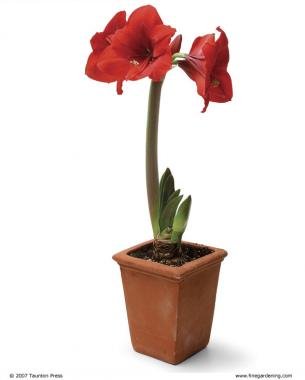
Amaryllis (Hippeastrum cvs.) are hard plants not to love. Their plump bulbs shoot up tall stalks topped with gorgeous, colorful blooms right when we need them most: during the winter doldrums. After they’re done flowering, however, what do we do with them? For many people, the answer is to toss them in the compost pile or trash bin and buy a new one next year. Who has time to take care of one more thing, right? Wrong. Dumping bulbs may sound like the easy way out, but bringing these plants back into bloom is simpler than one might think.
Some people say supervised neglect (an oxymoron, I know) is the key to getting amaryllis to rise again. But after shelling out good money for fat bulbs, it seems a shame to leave their fate to chance. Over the years, I have successfully brought my amaryllis back into flower with minimal difficulty. Other than watering, these plants ask for little care. But I know it never hurts to get a second opinion, so I went straight to the expert: John Bryan, author of Bulbs, the ultimate reference for these types of plants. He shared several helpful hints on how to bring these bulbs full circle.
1. Remove faded flowers
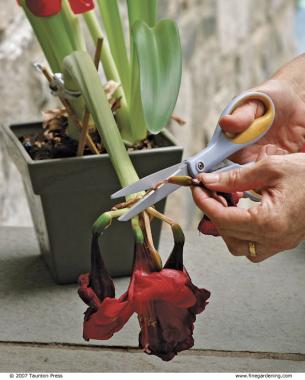
As with most bulbous plants, you should remove the flower stalks after the flowers fade. This directs the plant’s energy to vegetative growth rather than seed production. Amaryllis are native to South Africa, so give them warm temperatures and strong light at this stage.
Continue to grow amaryllis inside in a south-facing window after flowering. Plants can be moved outdoors and placed in direct sun once the nighttime temperatures remain above 50°F and the daytime temperatures are consistently warm. Remember to water the bulbs when the soil is barely moist to the touch. During the hottest days of summer, potted plants can dry out in a day.
2. Encourage dormancy
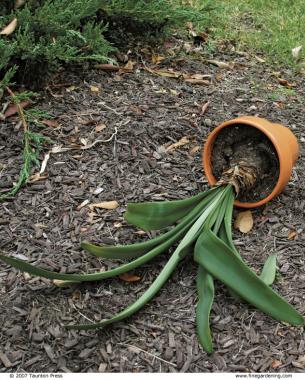
Amaryllis differ from some other common bulbs in a major way: They do not need a stretch of cold weather in order to trigger flower formation. But like many bulbs, they do need a period of dormancy, or what Bryan calls “a ripening period.” For the best flowering, allow the leaves to grow and energize for four to six months before encouraging plants into dormancy.
To trigger the process, stop watering your amaryllis and, if outside, tip the container on its side to prevent it from catching rain.
3. Snip off dead leaves

After a few weeks, remove the leaves when they’re completely withered. Bryan recommends placing the tipped pot in direct sun to bake, which gives the bulb a needed warming treatment. Unlike many other bulbs, amaryllis do not require dark conditions during dormancy. If the nighttime temperatures fall below 50°F, bring the bulb inside. These bulbs need two to three months of dormancy. If the rest period happens to fall when outdoor temperatures are cool, pots can be left to dry and stored in a warm, dry place indoors.
4. Awaken the dormant bulb
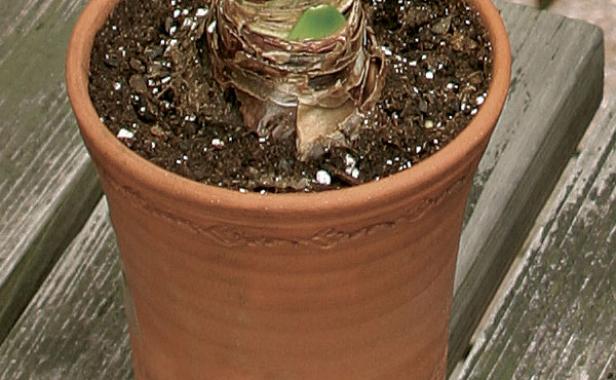
It is easy to awaken the bulb from dormancy: Simply water once to initiate growth, and keep an eye on the soil. When it dries out, water again but with a light hand—especially until the new growth starts to emerge. If you plan to repot your bulb, do so before you encourage it to break dormancy.
5. Place plant in bright light
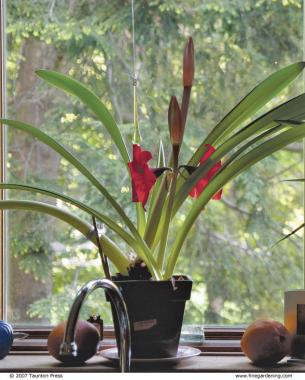
Once the amaryllis is up and growing, place it in the sunniest window you have. Continue to water moderately to encourage strong growth, but avoid overwatering, which can be lethal to these plants. Once the flowers start to unfurl, move the plants to a spot with less light to prolong the bloom time.
Amaryllis can last for a good number of years. If a bulb begins to drastically shrink in size, becomes soft, and doesn’t perform well, it’s likely exhausted. You can grow any side bulbs that the main plant produced, but they may take a few years before they put on a good show.
When to repot amaryllis
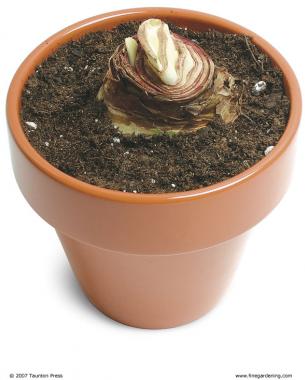
Amaryllis should be repotted when the bulb outgrows its container or appears to be less productive. Bulbs benefit from periodically changing the soil. Repot your amaryllis when it is dormant. Be sure to use well-draining potting soil and follow these additional tips.
• Pick the right pot Choose a container that is 1 to 2 inches wider than the bulb and is deep enough to accommodate the bulb’s brittle root system. Use a terra-cotta, ceramic, or other heavy container that will act as a sturdy anchor for the large flower stalks.
• Don’t plant too deep Only two-thirds of the bulb should be below the soil surface. The succulent part where the leaves emerge (the neck) is susceptible to rot if left sitting in wet soil.
• Feed if you want to According to Bryan, amaryllis require no feeding. Many gardeners, however, add a balanced liquid fertilizer at half-strength once the leaves start to grow. A dose of food will promote green growth, and the extra nutrients can help bulk up bulbs that noticeably shrink each year.
Checklist for holiday blooms
If you’d like to coax your bulbs into bloom for the holidays, follow this time line.
Late June
Stop watering, and place the pot on its side so that the bulb does not receive any more water. It is essential that the bulb goes completely dormant by the end of the summer.
Early August
When all the foliage has withered, cut it off and store the potted bulb in a dry place.
Early October
Repot or refresh the soil in the container, then water just enough to keep the soil from drying out completely.
Late October
When the top of the flower stalk begins to emerge, move the pot to a location with a southern exposure and increase watering. Continue watering and, finally, enjoy the great blooms.
Fine Gardening Recommended Products
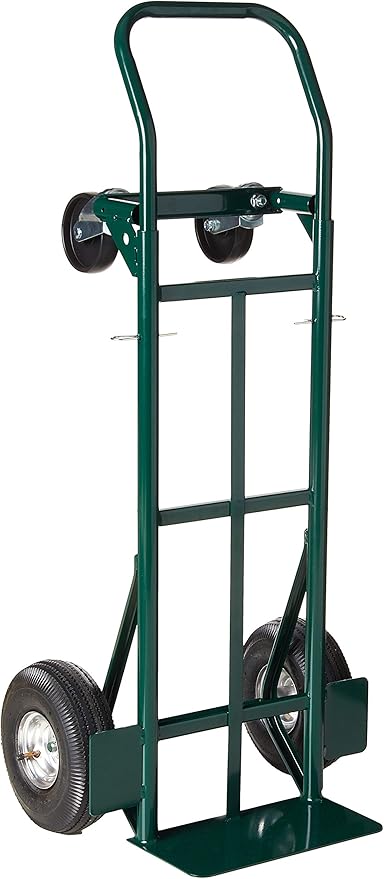
Harper Super Steel 700-lb. Platform Hand Truck
Fine Gardening receives a commission for items purchased through links on this site, including Amazon Associates and other affiliate advertising programs.

3 Pack 4.1Inch Bonsai Pruning Scissors
Fine Gardening receives a commission for items purchased through links on this site, including Amazon Associates and other affiliate advertising programs.

Ho-Mi Digger - Korean Triangle Blade
Fine Gardening receives a commission for items purchased through links on this site, including Amazon Associates and other affiliate advertising programs.

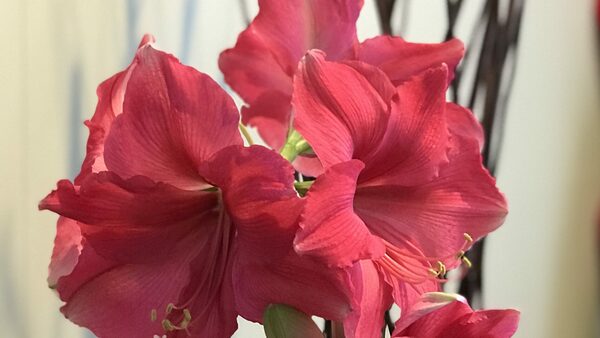
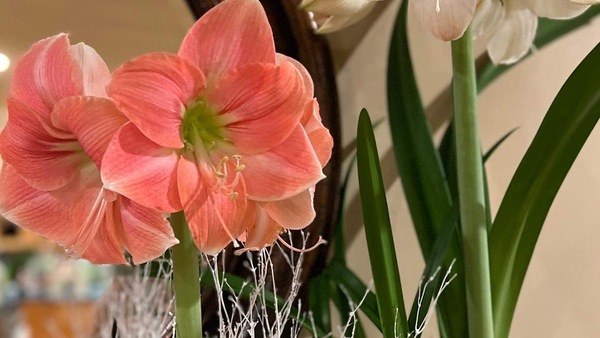
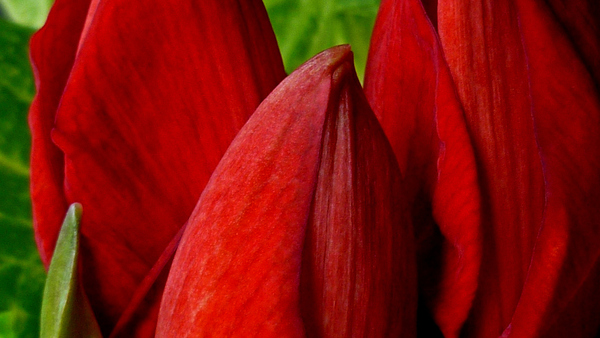
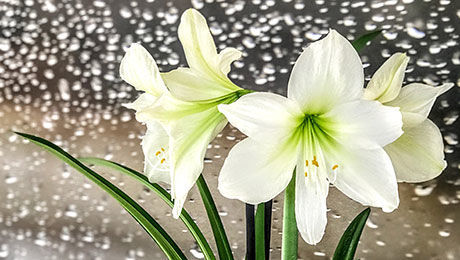













Comments
Log in or create an account to post a comment.
Sign up Log in